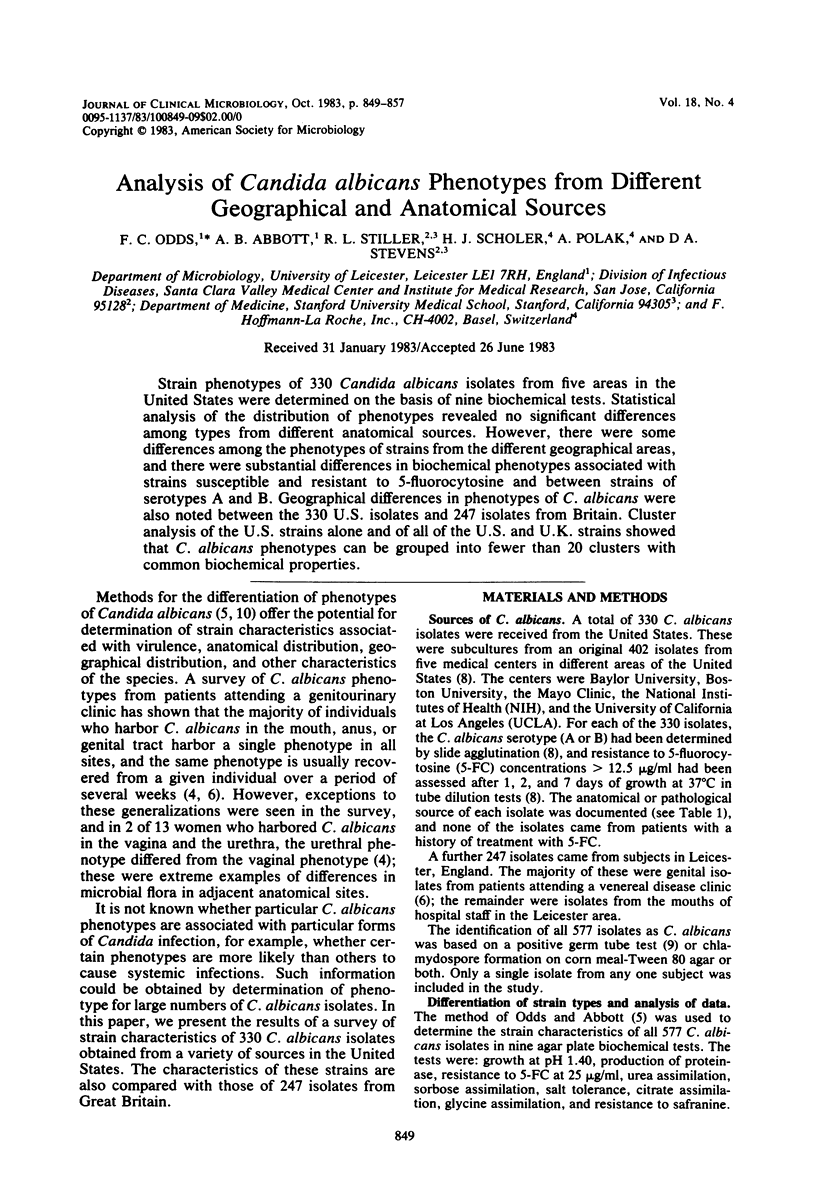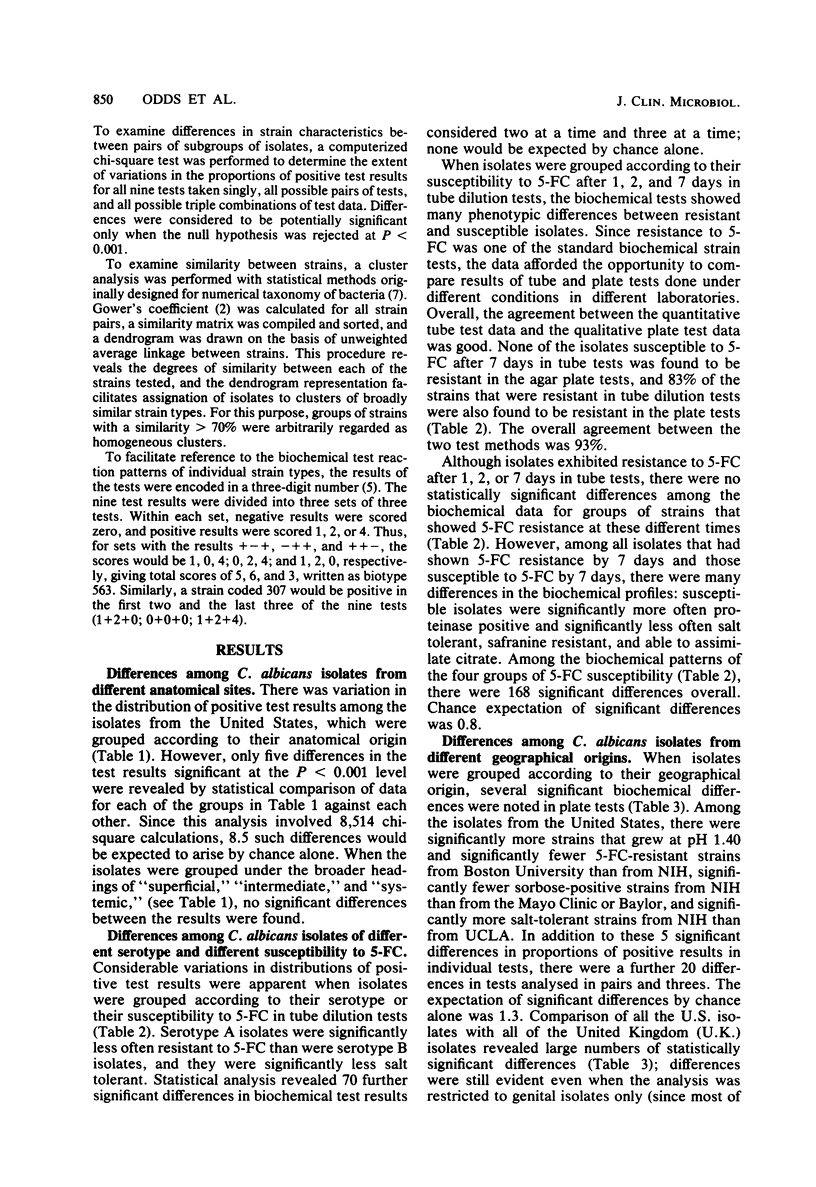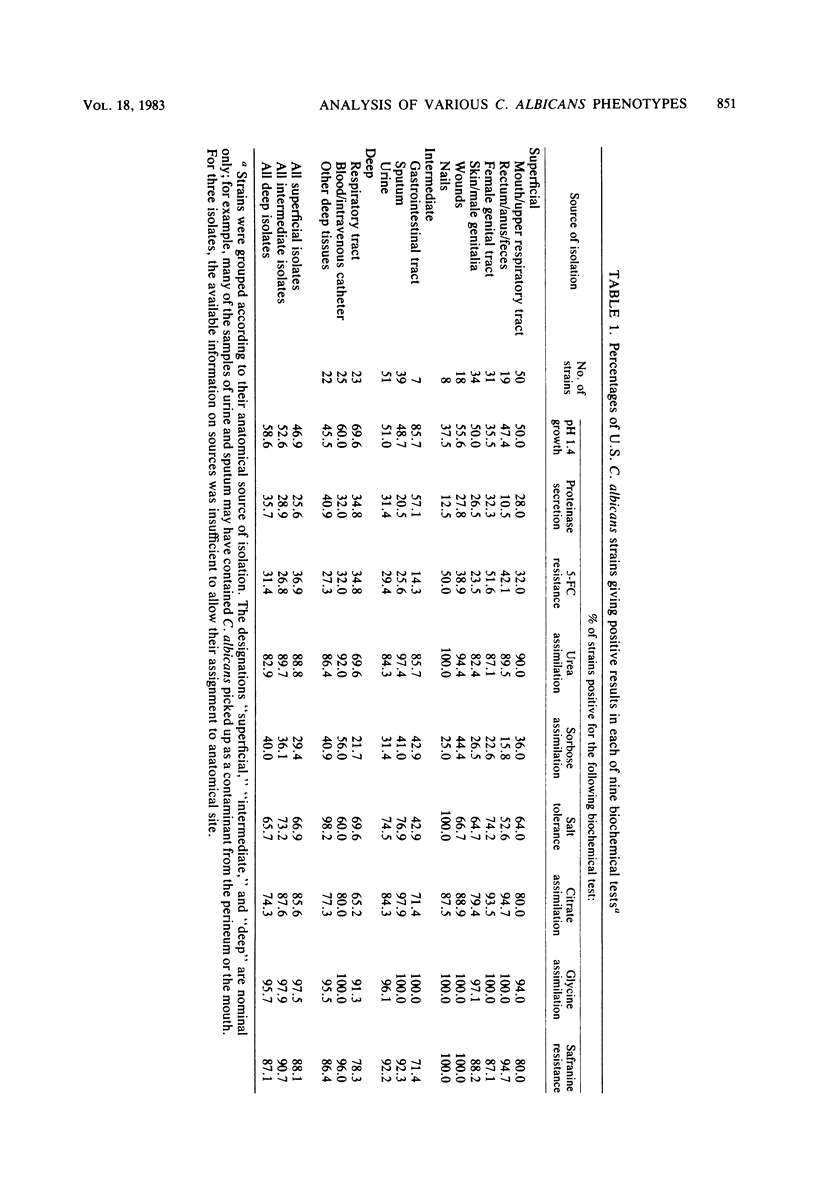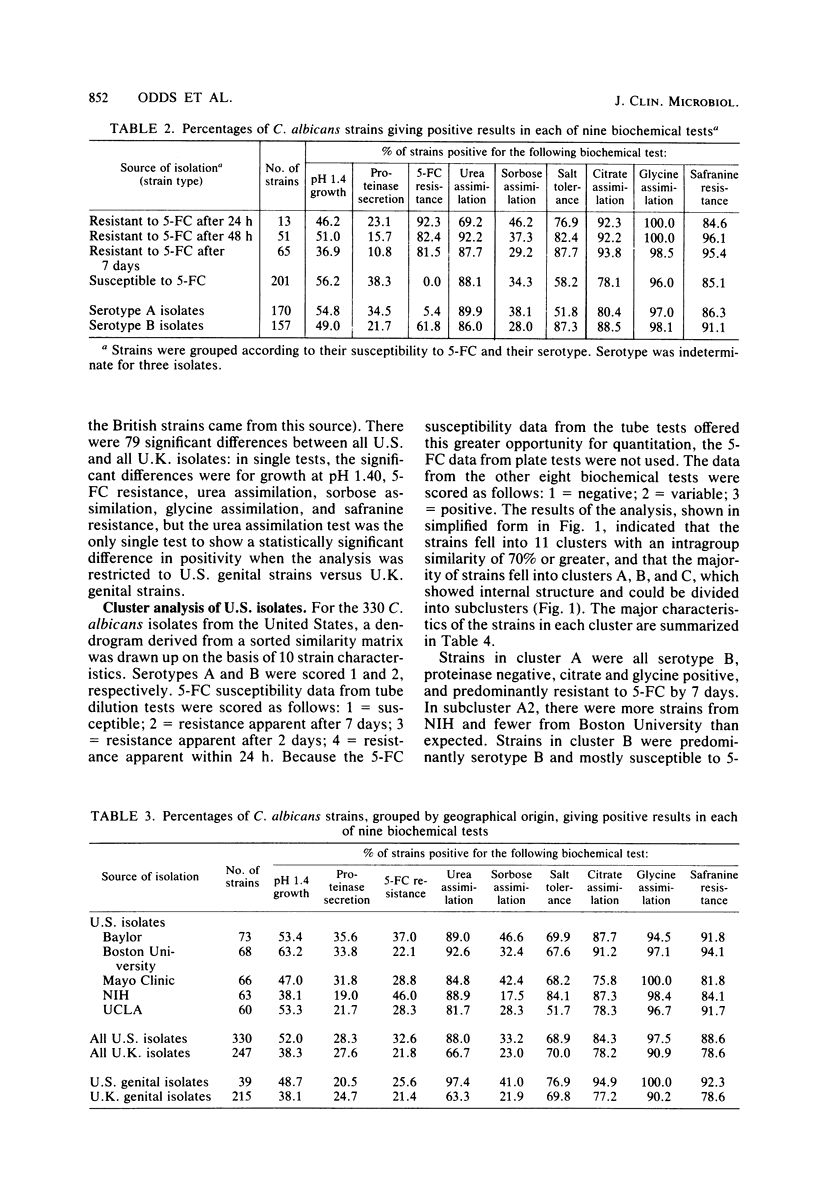Abstract
Strain phenotypes of 330 Candida albicans isolates from five areas in the United States were determined on the basis of nine biochemical tests. Statistical analysis of the distribution of phenotypes revealed no significant differences among types from different anatomical sources. However, there were some differences among the phenotypes of strains from the different geographical areas, and there were substantial differences in biochemical phenotypes associated with strains susceptible and resistant to 5-fluorocytosine and between strains of serotypes A and B. Geographical differences in phenotypes of C. albicans were also noted between the 330 U.S. isolates and 247 isolates from Britain. Cluster analysis of the U.S. strains alone and of all of the U.S. and U.K. strains showed that C. albicans phenotypes can be grouped into fewer than 20 clusters with common biochemical properties.
Full text
PDF








Selected References
These references are in PubMed. This may not be the complete list of references from this article.
- Odds F. C., Abbott A. B. A simple system for the presumptive identification of Candida albicans and differentiation of strains within the species. Sabouraudia. 1980 Dec;18(4):301–317. [PubMed] [Google Scholar]
- Odds F. C., Abbott A. B., Reed T. A., Willmott F. E. Candida albicans strain types from the genitalia of patients with and without Candida infection. Eur J Obstet Gynecol Reprod Biol. 1983 Apr;15(1):37–43. doi: 10.1016/0028-2243(83)90295-2. [DOI] [PubMed] [Google Scholar]
- Odds F. C. Genital candidosis. Clin Exp Dermatol. 1982 Jul;7(4):345–354. doi: 10.1111/j.1365-2230.1982.tb02441.x. [DOI] [PubMed] [Google Scholar]
- Stiller R. L., Bennett J. E., Scholer H. J., Wall M., Polak A., Stevens D. A. Susceptibility to 5-fluorocytosine and prevalence of serotype in 402 Candida albicans isolates from the United States. Antimicrob Agents Chemother. 1982 Sep;22(3):482–487. doi: 10.1128/aac.22.3.482. [DOI] [PMC free article] [PubMed] [Google Scholar]
- TASCHDJIAN C. L., BURCHALL J. J., KOZINN P. J. Rapid identification of Candida albicans by filamentation on serum and serum substitutes. AMA J Dis Child. 1960 Feb;99:212–215. doi: 10.1001/archpedi.1960.02070030214011. [DOI] [PubMed] [Google Scholar]
- Warnock D. W., Speller D. C., Day J. K., Farrell A. J. Resistogram method for differentiation of strains of Candida albicans. J Appl Bacteriol. 1979 Jun;46(3):571–578. doi: 10.1111/j.1365-2672.1979.tb00857.x. [DOI] [PubMed] [Google Scholar]


